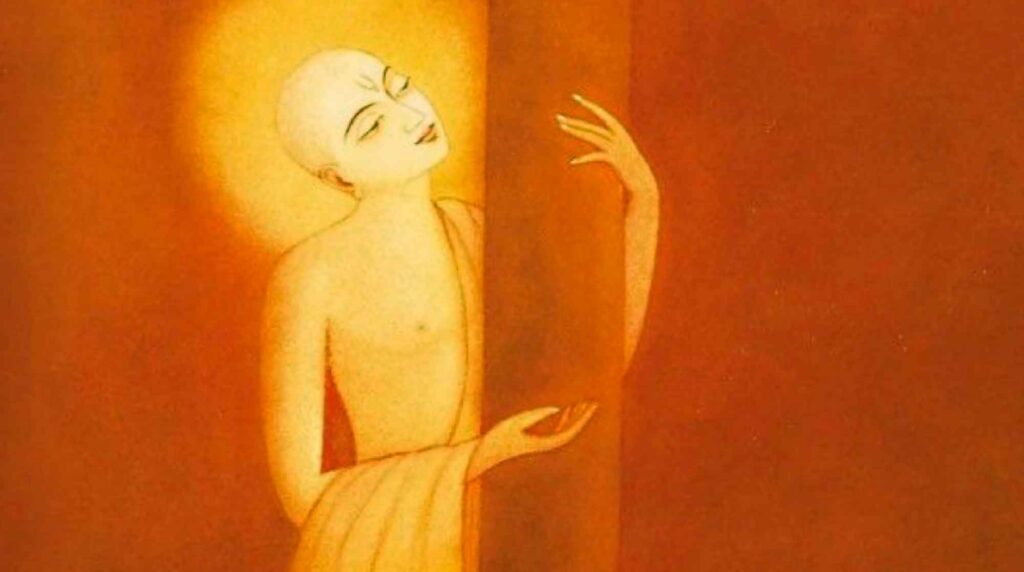Overview
'Nūtana Patrikā (A New Magazine) - 2' was published in Sajjana Toṣaṇī, Vol 4 Issue 3 in 1892. In this article, Śrīla Bhaktivinoda Ṭhākura discusses three articles in the 3rd issue of the new magazine, Caitanya-mata-bodhinī and shows their deficiencies.
(translated by Swami B.V. Giri)
We were most dissatisfied after reading the third issue of the new magazine, Śrī Caitanya-Mata-Bodhinī which is being published from Vraja-dhāma. Nothing can be gained from the three articles which have come out in this issue as Maṅgalācaraṇa (‘Auspicious Invocation’), Śri Caitanya-Mata Sūcanā (‘An Introduction to Sri Caitanya’s Philosophy’), and Vivāda Rahasya (‘The Secret Quarrel’). The prose verse of the śloka, sureśānāṁ durgam which has been explained in Maṅgalācaraṇa, and finally, the explanation of the śloka, kalau yaṁ vidvāmsaḥ, which has been written, does not yield the results of hard work. If you read the following sentence, everyone will be able to identify the author.
“That Śrī Kṛṣṇa Caitanya is directly Śrī Yaśodānandana Śyāmasundara is confirmed by the śloka, antaḥ kṛṣṇa etc. and the prayers found in Stavāvalī. The designation of Gaurāṅga Śrī Kṛṣṇa Caitanya as the manifestation Śrī Kṛṣṇa is only seen in respect to the devotees.”
We have no dispute with the author’s Bengali. But the unfortunate thing is that we are shocked that we are unable to understand his words. I do not understand how Śrī Kṛṣṇa is manifest as Mahāprabhu only in the eyes of the devotees. Whether Mahāprabhu should be seen in the form of a devotee (bhakta-rūpa), or as a devotee, is extremely obscure. We would be most satisfied if, in the future, the respected author would show some mercy and use words that are easy for us to understand!
We have found a kind of despondent happiness in view of the article that has come out as Śri Caitanya-Mata Sūcanā. We had hoped that the author would publish Vaiṣṇava tattva based on the philosophical statements of the learned and respectable Gosvāmīs. But when we first saw the śloka, ārādhyo bhagavān vrajeśa-tanayas, we realised that the author did not understand the subtle distinctions between vaidāntika-tattva (the philosophical principles of Vedānta) and bhajana-tattva (the philosophical principles of bhajana).
Śrīnātha Cakravartī Ṭhākura has himself written this śloka revealing the extraordinary philosophy of Śrī Śrī Mahāprabhu’s bhajana. However, not all tattvas are included in regards to that philosophy. This śloka does not specifically mention many points such as jīva-tattva, jaḍa-tattva, śakti-tattva, sādhana-bhakti-tattva etc. This śloka is not complete concerning tattva-vicāra (deliberations on tattva). In order to have the complete number of tattvas, it is necessary to examine the Ṣaṭ Sandarbhas which describes them. This is discussed in the Bhakti Sandarbha:
tatra pūrva-sandarbha-catuṣṭayena sambandho vyākhyātaḥ | tatra pūrṇa-sanātana-paramānanda-lakṣaṇa-para-tattva-rūpaṁ sambandhi ca brahma paramātmä bhagavān iti tridhāvirbhāvatayā śabditam iti nirūpitam | tatra ca bhagavattvenaivāvirbhāvasya paramotkarṣaḥ pratipāditaḥ | prasaṅgena viṣṇv-ādyāś catuḥ-sanādyāś ca tad-avatārā darśitāḥ | sa ca bhagavān svayaṁ śrī-kṛṣṇa eva iti nirdhāritam | paramātma-vaibhava-gaṇane ca taṭastha-śakti-rūpāṇāṁ cid-eka-rasānām api anādi-para-tattva-jñāna-saṁsargābhāvamaya-tad-vaimukhya-labdha-cchidrayā tan-māyayāvṛta-svarūpa-jñānānāṁ tayaiva sattva-rajas-tamo-maye jaḍe pradhāne racitātma-bhāvānāṁ jīvānāṁ saṁsāra-duḥkhaṁ ca jñāpitam|
(In the four previous Sandarbhas, sambandha was explained. There, the forms of the para-tattva who has characteristics such as completeness, eternity and supreme bliss was described as appearing in three features, denoted by the words Brahman, Paramātmā and Bhagavān. There, the manifestation of Bhagavān was proven to be the topmost. In this context, avatāras such as Viṣṇu, the Catuḥsana etc. were examined. It was then ascertained that Śrī Kṛṣṇa is Svayaṁ-Bhagavān. The power of Paramātmā, and the forms of the taṭastha-śakti [the jīvas] who are spiritual by nature, were discussed. Their svarūpa-jñāna (inherent knowledge) is eclipsed by māyā, due to their misfortune of being averse to the Supreme. Thus, from time immemorial, they have no knowledge of the beginningless para-tattva and thus the jīvas believe they are comprised of gross matter in the miserable material world, made up of sattva, rajas and tamas.” – Bhakti Sandarbha 1)
Furthermore, it is said in the Prīti Sandarbha:
iha khalu sakala śāstra-pratipādyaṁ parama-tattvaṁ sandarbha-catuṣṭayena pūrvaṁ sambaddham | tad-upāsanā ca tad-anantara-sandarbheṇābhihitā | tat-krama-prāptatvena prayojanaṁ khalv adhunā vivicyate |
(“Here the parama-tattva who is understood in all the śāstra was previously described in four Sandarbhas. His worship was described in the next Sandarbha. Now, in the proper sequence, the prayojana will be described.”– Prīti Sandarbha 1)
By reading this summary of the Sandarbhas one can clearly understand that Kṛṣṇa, Kṛṣṇa’s śaktis, Kṛṣṇa’s līlā and bhagavat-tattva, then the two different vibhinnaṁśas – nitya-baddha and nitya-mukta are jīva-tattva, then there is the covering of māyā-tattva, and sādhana-tattva and sādhya-tattva – all these separate categories make up nine tattvas. These nine tattvas are prameya (knowledge referring to an object), and the perfect self-evident Vedas and the Bhāgavata, which is the crown of the smṛti-śāstra, are the pramāṇa (evidence). Vaiṣṇavas will never consider discussions on these ten principles to be Vedantic. When there is so much imperfection in the respected author’s conclusions, we cannot believe that there will be any kind of finesse in any future discussions of his. There is so much inconsistency in this article.
According to the language used at the end of his poem, it seems that the author is very much in favour of party-spirit. When he was not able to win by his own prowess, he eventually prayed for God’s help, and showed his true nature by using the word ‘barbarians’ in referring to his detractors.













